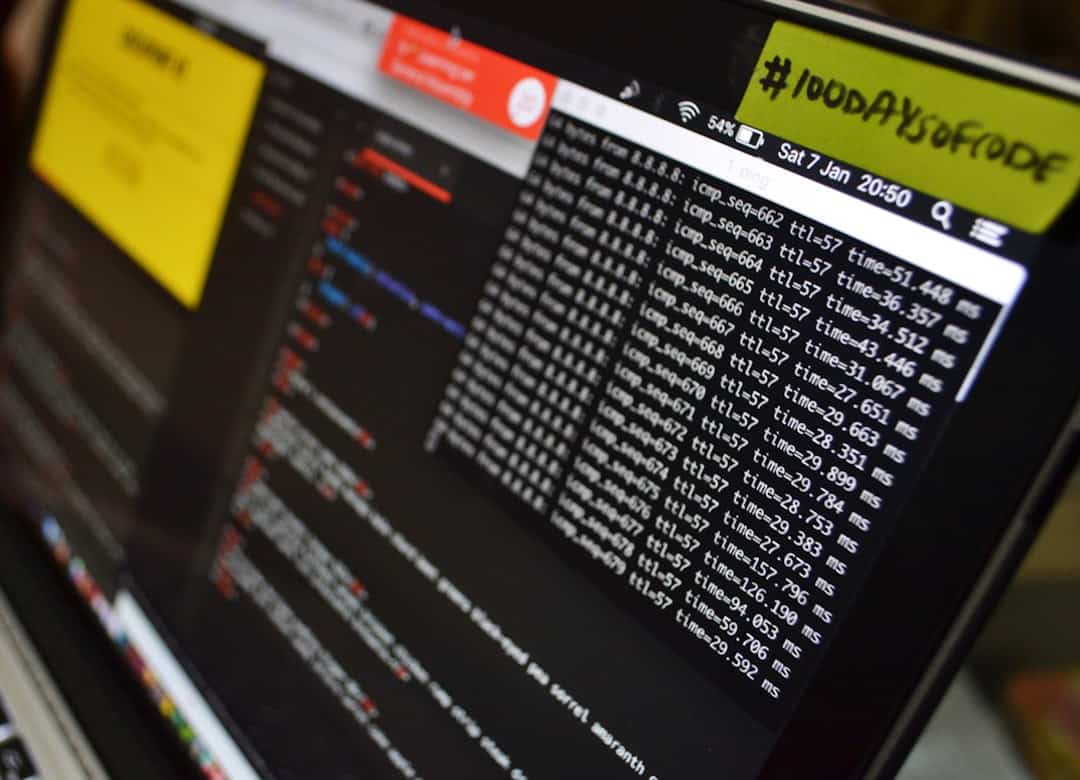Zero-day vulnerabilities are security flaws in software that are unknown to the vendor and lack an available patch. These vulnerabilities are highly valuable to cybercriminals as they allow for undetected system exploitation. They can exist in various types of software, including operating systems, web browsers, and applications.
The primary danger of zero-day vulnerabilities lies in their ability to be exploited before the software vendor becomes aware of their existence. This leaves systems defenseless until a patch is developed and implemented. Consequently, zero-day vulnerabilities present a significant risk to both organizational and individual security.
Hackers often discover these vulnerabilities and use them to launch targeted attacks. The absence of detection or patching mechanisms makes zero-day vulnerabilities particularly attractive to malicious actors. This heightens the threat level for all potential targets.
To mitigate risks associated with zero-day vulnerabilities, it is essential for organizations to remain vigilant about emerging threats and implement proactive security measures. Staying informed about the latest vulnerabilities and taking swift action to protect systems is crucial in maintaining robust cybersecurity defenses.
Key Takeaways
- Zero day vulnerabilities are unknown security flaws that can be exploited by attackers before a patch is available
- Patching is crucial for addressing vulnerabilities and protecting systems from potential attacks
- Best practices for patch management include prioritizing patches, testing them before deployment, and maintaining a regular patching schedule
- Security tools and software such as antivirus programs, intrusion detection systems, and vulnerability scanners can help in identifying and addressing security issues
- Implementing network segmentation can limit the impact of a security breach by isolating affected areas and preventing lateral movement by attackers
- Regular security audits help in identifying and addressing security weaknesses and ensuring compliance with security policies
- Training and educating employees on security best practices can help in creating a security-conscious culture and reducing the risk of human error leading to security breaches
Importance of Patching
Patching is the process of updating software to fix known vulnerabilities and improve security. It is a critical aspect of cybersecurity because it helps to protect systems from known threats and reduce the risk of exploitation. Patching is essential for maintaining the security and integrity of software and systems, as it helps to address known vulnerabilities and prevent them from being exploited by attackers.
Without regular patching, systems are at risk of being compromised by cybercriminals who can exploit known vulnerabilities to gain unauthorized access or cause damage. Regular patching is essential for maintaining the security and integrity of software and systems. It helps to address known vulnerabilities and prevent them from being exploited by attackers.
Without regular patching, systems are at risk of being compromised by cybercriminals who can exploit known vulnerabilities to gain unauthorized access or cause damage. Patching is a critical aspect of cybersecurity because it helps to protect systems from known threats and reduce the risk of exploitation. It is essential for organizations to have a robust patch management process in place to ensure that all software and systems are regularly updated with the latest patches.
Best Practices for Patch Management

Implementing a robust patch management process is essential for organizations to effectively protect their systems from known vulnerabilities. Some best practices for patch management include: 1. Regularly scanning for vulnerabilities: Organizations should regularly scan their systems for vulnerabilities using automated tools or software.
This helps to identify any potential security flaws that need to be addressed through patching. 2. Prioritizing patches: Not all patches are created equal, and some may be more critical than others.
Organizations should prioritize patches based on the severity of the vulnerability and the potential impact on their systems. 3. Testing patches before deployment: Before deploying patches, organizations should test them in a controlled environment to ensure that they do not cause any compatibility issues or system disruptions.
4. Automating patch deployment: Automating the deployment of patches can help organizations ensure that all systems are consistently updated with the latest security fixes. 5.
Monitoring patch compliance: Organizations should regularly monitor their systems to ensure that all patches have been successfully deployed and that there are no outstanding vulnerabilities. Implementing a robust patch management process is essential for organizations to effectively protect their systems from known vulnerabilities. Some best practices for patch management include regularly scanning for vulnerabilities, prioritizing patches based on severity, testing patches before deployment, automating patch deployment, and monitoring patch compliance.
Utilizing Security Tools and Software
| Security Tool | Usage | Effectiveness |
|---|---|---|
| Firewall | Used to monitor and control incoming and outgoing network traffic | Highly effective in preventing unauthorized access |
| Antivirus Software | Scans and removes malware from the system | Effective in detecting and removing known threats |
| Encryption Tools | Encrypts sensitive data to protect it from unauthorized access | Highly effective in securing data at rest and in transit |
| Intrusion Detection System (IDS) | Monitors network or system activities for malicious activities or policy violations | Effective in detecting and alerting about potential security breaches |
There are a variety of security tools and software available that can help organizations effectively manage their patching process and protect their systems from known vulnerabilities. Some common security tools and software include: 1. Vulnerability scanners: These tools can help organizations identify potential security flaws in their systems and prioritize patches based on the severity of the vulnerability.
2. Patch management software: There are many patch management solutions available that can help organizations automate the deployment of patches and ensure that all systems are consistently updated with the latest security fixes. 3.
Endpoint protection solutions: Endpoint protection solutions can help organizations protect their devices from malware, ransomware, and other cyber threats that may exploit known vulnerabilities. 4. Security information and event management (SIEM) solutions: SIEM solutions can help organizations monitor their systems for potential security incidents and quickly respond to any threats that may arise.
5. Network security tools: Network security tools can help organizations protect their networks from unauthorized access and potential exploitation of known vulnerabilities. Utilizing security tools and software can help organizations effectively manage their patching process and protect their systems from known vulnerabilities.
Some common security tools and software include vulnerability scanners, patch management software, endpoint protection solutions, SIEM solutions, and network security tools.
Implementing Network Segmentation
Network segmentation is the practice of dividing a computer network into smaller subnetworks to improve performance, security, and manageability. By implementing network segmentation, organizations can reduce the impact of a potential breach by limiting an attacker’s ability to move laterally within the network. This can help prevent the spread of malware or unauthorized access to sensitive data.
Network segmentation can also help organizations improve performance by reducing network congestion and improving bandwidth utilization. By dividing the network into smaller segments, organizations can prioritize traffic and ensure that critical applications have the necessary resources to operate efficiently. Implementing network segmentation can help organizations improve security, performance, and manageability.
By dividing the network into smaller subnetworks, organizations can reduce the impact of a potential breach and prevent the spread of malware or unauthorized access to sensitive data. Network segmentation can also help improve performance by reducing network congestion and prioritizing traffic for critical applications.
Conducting Regular Security Audits

Regular security audits are essential for organizations to assess their current security posture, identify potential vulnerabilities, and ensure compliance with industry regulations and best practices. Security audits can help organizations identify weaknesses in their systems, processes, and policies that may need to be addressed through patching or other security measures. Security audits can also help organizations ensure that they are effectively managing their patching process and staying up-to-date with the latest security fixes.
By conducting regular security audits, organizations can proactively identify potential vulnerabilities before they are exploited by attackers. Regular security audits are essential for organizations to assess their current security posture, identify potential vulnerabilities, and ensure compliance with industry regulations and best practices. Security audits can help organizations identify weaknesses in their systems, processes, and policies that may need to be addressed through patching or other security measures.
Training and Educating Employees
Training and educating employees about cybersecurity best practices is essential for organizations to effectively manage their patching process and protect their systems from known vulnerabilities. Employees play a critical role in maintaining the security of an organization’s systems, as they are often the first line of defense against potential threats. By providing employees with regular training on cybersecurity best practices, organizations can help ensure that they are aware of potential risks and know how to respond to potential security incidents.
This can help prevent employees from inadvertently introducing vulnerabilities into the organization’s systems through actions such as clicking on malicious links or opening suspicious email attachments. Training and educating employees about cybersecurity best practices is essential for organizations to effectively manage their patching process and protect their systems from known vulnerabilities. By providing employees with regular training on cybersecurity best practices, organizations can help ensure that they are aware of potential risks and know how to respond to potential security incidents.
This can help prevent employees from inadvertently introducing vulnerabilities into the organization’s systems through actions such as clicking on malicious links or opening suspicious email attachments. In conclusion, zero day vulnerabilities pose a significant threat to the security of organizations and individuals alike due to their ability to be exploited before a patch is developed and deployed. Regular patching is essential for maintaining the security and integrity of software and systems as it helps address known vulnerabilities and prevent them from being exploited by attackers.
Implementing a robust patch management process, utilizing security tools and software, implementing network segmentation, conducting regular security audits, and training employees about cybersecurity best practices are all essential steps in effectively managing zero day vulnerabilities and protecting against potential threats.
FAQs
What is a zero-day vulnerability?
A zero-day vulnerability is a security flaw in software or hardware that is unknown to the vendor or developer. It is called “zero-day” because it is exploited by attackers on the same day it is discovered, before a fix or patch is available.
What is a patch zero day?
A patch zero day refers to a situation where a security patch or update is released by a vendor to fix a zero-day vulnerability. This means that the vulnerability is actively being exploited by attackers, and the vendor has not had time to develop and release a fix before attacks are occurring.
How are zero-day vulnerabilities and patch zero days addressed?
When a zero-day vulnerability is discovered, security researchers and vendors work quickly to develop and release a patch to fix the issue. In the case of a patch zero day, the patch is released as soon as possible to mitigate the risk of exploitation.
Why are patch zero days a concern for cybersecurity?
Patch zero days are a concern for cybersecurity because they indicate that attackers are actively exploiting a vulnerability for which there is no available fix. This leaves systems and users at risk of compromise until a patch is released and applied.
How can organizations protect themselves from patch zero days?
To protect against patch zero days, organizations should stay informed about security updates and patches released by software and hardware vendors. It is important to apply patches and updates as soon as they are available to mitigate the risk of exploitation. Additionally, implementing strong security measures such as firewalls, intrusion detection systems, and regular security audits can help to minimize the impact of zero-day vulnerabilities.











Leave a Reply